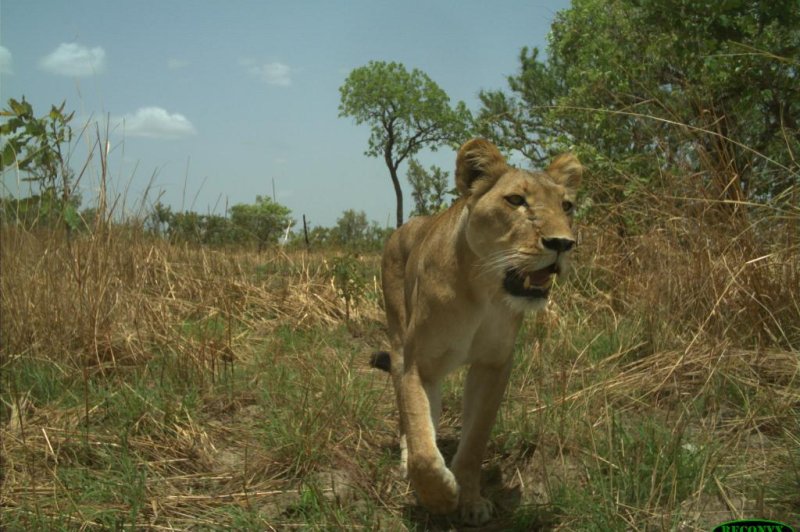1 of 2 | Scientists used camera traps to document the movement and distribution of West African lions in a complex of national parks and hunting preservers. Photo by University of Michigan Applied Wildlife Ecology Lab
March 30 (UPI) -- Data from a massive wildlife camera survey suggests West African lions divide their time evenly between the region's largest national parks and the hunting preserves that surround them.
There are an estimated 400 lions living in West Africa, and 90 percent of them are found in a protected complex called W-Arly-Pendjari, or the WAP Complex. The expanse comprises five national parks and 14 hunting concessions in Burkina Faso, Niger and Benin -- some 10,200 square miles of habitat.
Inside the parks, the lions are protected and face fewer human pressures, but in the hunting preserves, the lions can be killed.
When scientists set out to document their distribution and movement patterns within the WAP Complex, they expected to find that lions avoided hunting concessions when possible. The results of the wildlife camera survey, one of the largest of its kind, showed no such preference.
"We were surprised by the lions' lack of spatial response to humans because they have shown avoidance behaviors in other systems," researcher Kirby Mills, doctoral student in ecology and evolutionary biology at the University of Michigan, told UPI. "We expected differences in habitat characteristics between management types, which we did observe, but we also expected lions to show some preference for one management type or the other."
For the study, researchers spread 238 motion-activated digital cameras across 5,000 square miles within the complex. The researchers were able to place their cameras on both park land and hunting preserve acreage.
"[Hunting concessions] owners were cooperative, engaged, and supportive of the work," said Nyeema C. Harris, assistant professor of ecology and evolutionary biology at Michigan. "One of the coauthors on the paper, Benoit Doamba, was the director general for hunting concessions in Burkina Faso at the time of the paper."
Wildlife triggered the shutters on the cameras 1.7 million times, but the cameras captured West African lions just 96 of those times. Computer models helped scientists determine where the photographed lions were going and spending their time.
The data -- detailed this week in the Journal of Applied Ecology -- showed the lions spend as much time in hunting preserves as they do in the parks.
Scientists hypothesize that lions are drawn to the hunting preserves because they are often lush, filled with prey and feature pump-supplied watering holes, whereas some of the region's underfunded parks, while mostly human-free, are host to degraded habitat and shrinking watering holes.
The research suggests West African lions are willing to risk exposure to humans for high quality habitat with plenty of water and prey.
Scientists hope their findings will inspire improved habitat restoration and conservation efforts inside the region's national parks.
"We are currently analyzing the diet of lions in WAP using fecal samples that Dr. Harris and her field team collect during the camera trap surveys," Mills said. "Once we have a better idea of the specific prey species that are important for lions in this region, we can help managers prioritize their conservation efforts."















